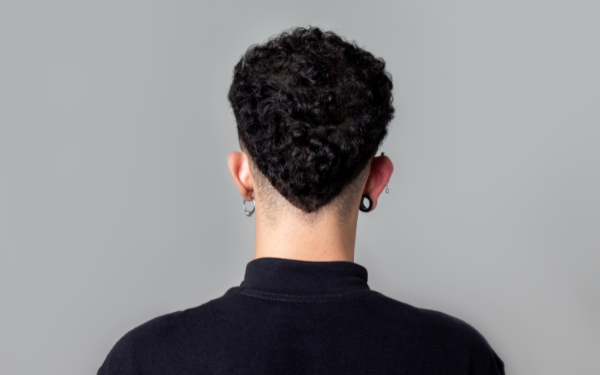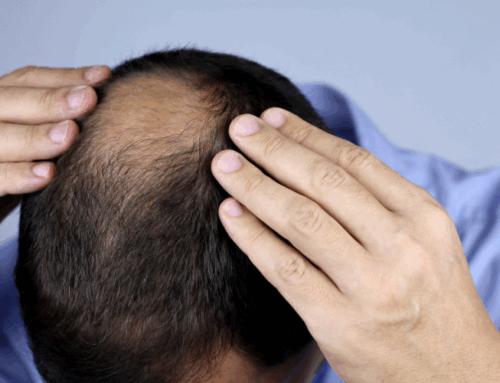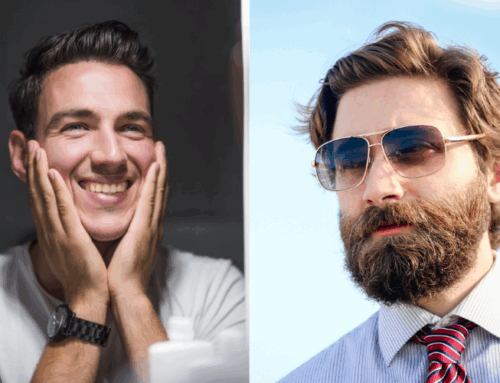Ever sat in a barber chair, asked for a fade, and walked out with a taper, or vice versa? You’re not alone. The difference between a taper and a fade haircut can be subtle yet significant, and understanding it can help you get the look you actually want. Both styles are among the most popular men’s haircuts today, and while they’re often confused, each offers a distinct look and maintenance level.
This guide breaks down everything you need to know: what each style is, the variations (like low fade, skin taper, and drop fade), and how to decide which one fits your hair type, face shape, and lifestyle. Whether you’re into clean cuts, bold contrasts, or subtle transitions, you’ll leave here knowing exactly what to ask your barber, and how to maintain your style between cuts. If you’re looking for experienced barbers who truly understand taper vs fade differences, visit our Fontana Barber Shop.
Taper vs Fade: A Quick Comparison Table
| Feature | Taper Haircut | Fade Haircut |
| Blend Style | Gradual blend, typically around sideburns and neckline | More dramatic blend; fades to skin or near-skin |
| Length Contrast | Maintains more length overall | More contrast between top and sides |
| Visibility | More subtle and natural | Sharper, bolder appearance |
| Best For | Professional, low-maintenance styles | Trendy, sharp, and edgy looks |
| Common Types | Low taper, high taper, skin taper | Low fade, drop fade, skin fade |
| Maintenance | Less frequent trims needed | Requires more upkeep to stay sharp |
| Popular With | Business professionals, minimalists | Trendsetters, athletes, creatives |
This table gives you a bird’s eye view of the main differences, but to really understand the distinction, and which one’s best for you, we’ll dive into each style next.
What Is a Taper Haircut?
A taper haircut is a classic, versatile style where the hair gradually shortens as it moves down the sides and back of the head. The transition is smooth and subtle, ending around the sideburns or the neckline. Unlike a fade, a taper usually doesn’t cut down to the skin, making it ideal for a clean, professional appearance without going too bold.
Tapers work well with all hair types, straight, wavy, or curly, and are a favorite for men who want something that looks sharp but isn’t overly high-maintenance. It’s a go-to for styles like the side part, brush back, or even more textured looks. The taper also offers flexibility; it can be paired with longer hair on top or worn with tighter, cropped styles.
Many men choose tapers because they’re timeless, office-friendly, and easy to grow out. They also work great for men with thinning hair since the gradual transition draws less attention to patchy areas.
Low Taper
The low taper starts just above the ears and tapers gently down the neckline and sideburns. It’s a discreet, polished cut that’s perfect for professional settings or anyone who prefers a subtle, low-key style. This style keeps more volume on the sides and is often paired with combovers or classic scissor cuts on top.
Ideal for men with round or square face shapes, a low taper frames the face well without being too aggressive. It’s also a favorite for those trying to maintain a clean neckline without committing to a fade. Try our Specialty Services menu.
High Taper
The high taper begins the tapering process much higher on the sides, often around the temples. It adds more contrast than a low taper while still keeping that natural, non-skin-blend look. High tapers pair nicely with pompadours, high-top fades, and textured styles.
If you’re looking for a cut that’s professional yet modern, the high taper bridges that gap. It can give a sharper edge to curly or voluminous hair, helping it appear more structured without the need for a full fade.
Temple Taper
Also known as a temp fade or Brooklyn fade, the temple taper is a focused tapering around the temples only. It gives a slight clean-up around the hairline without touching the back or neckline much.
This is a great option for men who like to shape up their front edges but still want to leave length in other areas. It’s a perfect blend of sharp and subtle.
Neck Taper / Tapered Neckline
A tapered neckline offers a clean, blended finish around the nape of the neck. Rather than a hard line or squared-off cut, the hair gradually shortens down to the skin, giving a more natural transition.
This is ideal for men who want a tidy look that grows out well. It’s especially beneficial if you wear your hair longer on top or don’t visit the barber frequently, it won’t look as “grown out” as quickly as other cuts.
Skin Taper
A skin taper is the boldest version of the taper. It blends the hair down to the skin, but only in the tapered sections, usually around the neck and sideburns. Unlike a full fade, this doesn’t wrap around the whole head.
It’s great for a cleaner neckline and jawline definition. While it’s technically not a full fade, it gives a slightly edgier appearance than a traditional taper. It’s a middle-ground cut for men who want some sharpness without going all-in on a fade. For a truly personalized cut, consider our Premium Experience designed to fit your lifestyle.
What Is a Fade Haircut?
A fade haircut is a modern, edgy style where the hair transitions from longer lengths at the top to very short, or even completely shaved, at the sides and back. The fade effect gives a dramatic contrast that defines the shape of the head and enhances facial features. It’s bolder than a taper and is often chosen by men who want to make a stylish, confident statement.
Fades can be customized based on how high up the head the fade starts and how short the hair is at the bottom. Some fades blend down to the skin (called a skin fade), while others leave a bit more length. Unlike the taper, the fade wraps around the entire head for a uniform finish. This cut is perfect for creative hairstyles like mohawks, comb-overs, and textured crops.
Popular among athletes, celebrities, and trendsetters, the fade haircut is a cornerstone of modern barbering. Check out real examples in our Gallery for inspiration. Let’s explore the different types of fades so you can find one that suits your style and hair type.
Low Fade
The low fade starts just above the ears and follows the hairline around the head. It offers a clean, subtle contrast between the top and the sides. This style is great for men who want the benefits of a fade without going too extreme.
Low fades work well with both straight and curly hair, and they’re incredibly versatile. You can pair a low fade with a slick back, pompadour, or even a side part. It’s also ideal for first-timers exploring fade styles without diving into a high-contrast look.
Drop Fade
A drop fade curves around the head, dipping lower behind the ears and at the nape of the neck. It creates a more natural contour compared to a straight fade and adds definition around the back of the head.
Drop fades are perfect for men with textured or curly hair as they emphasize natural shape and volume on top. Want this look from pros who know fades inside out? Book with Five Star Barber Brand. You’ll often see this fade paired with waves, afros, or even faux hawks for a stylish, sculpted appearance.
Skin Fade (Bald Fade)
The skin fade, also known as a bald fade, blends all the way down to the scalp. It’s one of the most high-contrast and eye-catching styles available. The fade usually starts high, mid, or low on the sides, depending on your preference, and gradually transitions to completely bare skin at the bottom.
This type of fade works especially well with short hairstyles like buzz cuts or short textured crops. It requires regular upkeep but offers a razor-sharp finish that stands out. Skin fades also highlight tattoos or clean lines if you like showcasing the sides and back of your head.
Undercut Fade
An undercut fade combines the classic undercut with a clear disconnect between the top and sides, with the smooth blending of a fade. The fade transitions from the disconnection down to shorter lengths, offering both sharp contrast and a polished look.
This style suits men with longer hair on top who want a bold, fashion-forward appearance. You can style it into a man bun, slick back, or even a voluminous quiff. It’s especially trendy among younger men and those with thick or textured hair.
Faux Hawk Fade
The faux hawk fade adds attitude and edge to the traditional fade. Hair on top is styled into a faux hawk, short on the sides and longer down the middle, while the sides and back feature a fade, usually high or mid.
This is a great look for men wanting a bit more personality in their haircut. It’s also flexible: you can style the top messily or with sharp lines, depending on the occasion. Ideal for round or square face shapes, the faux hawk fade can elongate your face and add definition.
High Fade
The high fade begins high up on the sides, near the temples, and creates the most dramatic contrast between the top and sides. It removes more hair than a low or mid fade and delivers a bold, contemporary finish.
This style works best for men with angular features or strong jawlines, as it helps define and highlight them. High fades pair well with nearly all top styles, from short crops to longer locks, and offer a clean, fresh appearance.
What Is a Taper Fade?
The taper fade is a stylish hybrid haircut that blends the subtlety of a taper with the boldness of a fade. It starts with a gradual reduction in length, like a taper, typically at the sideburns and neckline, but then fades down to much shorter hair, sometimes even skin, for a sharper finish. Think of it as the best of both worlds: clean, understated transitions with a crisp, modern edge.
Taper fades are ideal for men who want a refined, professional look that still feels current and fashionable. It’s incredibly versatile and can be customized based on your personal style. The taper fade suits almost every face shape and hair type, which makes it a go-to for barbers and clients alike.
This cut is also easier to maintain than a full fade, since the fading area is smaller. Whether you wear your hair curly, straight, or textured, a taper fade adds definition without going overboard, perfect for work and play.
Fade Comb Over
The fade comb over is a classic-meets-modern style where the top hair is left longer and neatly combed to one side, while the sides and back are faded down for a sleek contrast. It’s a favorite among men who want a clean, polished look that still carries a bit of flair.
This style pairs especially well with a mid or low fade, offering a sophisticated finish without being too aggressive. It suits both thick and thin hair, and is often styled with a side part, giving it a vintage vibe with a contemporary twist.
You can tailor the fade comb over to your taste: a skin fade comb over makes the style more dramatic, while a taper fade comb over keeps it subtle. Use a medium-hold pomade or styling cream to keep the hair in place throughout the day without making it stiff or greasy.
How to Choose Between a Taper and a Fade
Deciding between a taper and a fade haircut isn’t just about trends, it’s about understanding what works best for your hair type, face shape, and lifestyle. Each cut delivers a different aesthetic and serves different grooming needs. Whether you’re looking for something bold or subtle, this guide will help you figure out which style is right for you.
Consider Your Hair Type
- Thick or coarse hair: Fades often work better with thick or curly textures, as they reduce bulk and create a cleaner profile. Skin fades or high fades can manage volume while keeping the style crisp.
- Fine or thin hair: A taper might be better, as it retains more length and density. It creates the illusion of fuller hair and avoids exposing too much scalp.
Think About Maintenance
- Fade haircuts, especially skin or high fades, require frequent upkeep. You’ll likely need to visit your barber every 1–2 weeks to keep the fade looking sharp and symmetrical.
- Taper haircuts are lower maintenance. Because the gradient is more subtle, the grow-out process is gentler, and you can go 3–4 weeks between trims.
Match with Your Lifestyle
- Professional or conservative settings: A taper is ideal. It’s clean, neat, and works well with traditional business attire.
- Creative or modern environments: A fade allows for more self-expression. From edgy skin fades to unique fade styles (like faux hawk or drop fade), it suits men who want to make a statement.
Consider Your Face Shape
- Round faces: Fades, especially high fades, elongate the appearance of the face and add structure.
- Oval faces: Lucky you! You can wear almost any haircut. Both tapers and fades will look flattering.
- Square faces: A taper can soften strong jawlines, while a fade will enhance them.
- Heart-shaped faces: A taper with volume on top adds balance and avoids emphasizing the forehead.
Ultimately, there’s no wrong choice, both styles are timeless and versatile. But understanding the subtle differences helps you get the cut that fits your look, lifestyle, and grooming preferences perfectly.
Maintenance Tips: How to Keep Your Taper or Fade Fresh Between Cuts
A well-executed taper or fade can instantly elevate your appearance, but even the sharpest haircut loses its edge without regular care. Maintaining your look between barber visits is key to keeping your style crisp and your hair healthy. Here’s how to do just that.
1. Regular Edging and Touch-Ups
Even if you’re not trimming the full haircut, maintaining the edges around your hairline, neckline, and sideburns can help preserve the shape. Use a trimmer or visit your barber for a quick line-up every 1–2 weeks to keep things sharp.
2. Moisturize and Condition
Whether you rock a taper or a skin fade, the exposed scalp needs care too. Use a lightweight moisturizer or leave-in conditioner to prevent dryness or flaking. If you have textured or curly hair, deep condition once a week to keep it soft and manageable.
3. Wash Strategically
Overwashing can dry out your scalp and hair, which dulls your cut’s fresh look. Stick to washing 2–3 times per week using a sulfate-free shampoo and follow with a nourishing conditioner. If your scalp gets oily, use a gentle dry shampoo in between washes.
4. Style With Purpose
Use pomades, waxes, or creams suited for your hair type. Don’t overdo it, too much product can weigh your hair down and make the fade or taper less noticeable. A matte finish works well for everyday looks, while a glossy pomade is great for a slick, polished appearance.
5. Protect Your Hair While Sleeping
Your pillowcase can cause friction that flattens your style and dries out your hair. Consider using a silk or satin pillowcase or wearing a durag or bonnet to maintain the shape and moisture levels overnight.
6. Know When It’s Time for a Cut
Even with great at-home care, your haircut will eventually need refreshing. Tapers generally hold shape for 3–4 weeks, while fades require a trim every 1–2 weeks to stay sharp. Mark your calendar or set a reminder so you don’t fall behind.
By following these simple but effective maintenance tips, you can extend the life of your taper or fade and keep your style looking like you just walked out of the barbershop.
FAQs: Taper vs. Fade Haircuts
When it comes to choosing the right haircut, people often have questions, especially when the styles are as similar yet distinct as the taper and the fade. Below, we answer some of the most commonly asked questions to help you confidently choose your next haircut and understand how to maintain it.
What’s the Main Difference Between a Taper and a Fade?
The main difference lies in the degree of blending and contrast. A taper transitions the hair gradually and subtly, usually around the neckline and sideburns, without cutting down to the skin. A fade, on the other hand, is a much more dramatic transition that may go all the way down to bare skin, particularly with a skin fade or bald fade. Fades tend to be bolder and more modern, while tapers offer a clean, classic look.
Can I Ask My Barber for a Mix of Both?
Yes, absolutely. Many popular styles today incorporate elements of both, a common example is the taper fade, which starts with a taper near the sideburns and neckline but fades into shorter hair for a more defined finish. If you’re unsure, describe what you want in terms of length, fade height, and hairline shape, or even better, show a photo for reference.
Which Style Is Easier to Maintain?
A taper is generally easier to maintain and grows out more gracefully, making it a great choice if you prefer low-maintenance grooming. A fade, especially a high or skin fade, requires more frequent visits, every 1 to 2 weeks, to keep it looking clean and crisp. The sharper the contrast, the faster it becomes noticeable as it grows out.
Does Head or Face Shape Matter?
Yes. Your head and face shape can significantly influence how a taper or fade complements your overall look. For example, round or fuller faces often benefit from the elongating effect of high fades, while oval or square faces can pull off most styles, including tapers. Talking to your barber about face shape is a smart way to ensure your cut enhances your natural features.
Is One Style More Professional Than the Other?
While both can be made to look professional, a taper is often viewed as more conservative and work-appropriate, especially in formal or corporate environments. A fade, depending on how sharp and dramatic it is, leans more into street style and trendiness, but it can still be tailored to look polished and sharp for professional settings.






Leave A Comment